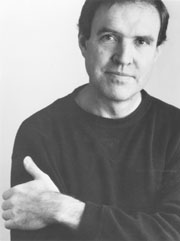

|
Amazing architect

You may want to clear a space in your calendar to listen to former McGill architecture professor Witold Rybczynski discuss his newest book: A Clearing in the Distance: Frederick Law Olmsted and North America.
This is Rybczynski's eighth book and one which has a particular pertinence for Montrealers given that our most treasured of parks, Mount Royal, was designed by Olmsted.
Working at a time when the profession of landscape architecture did not exist, Olmsted, an American journalist, essayist, abolitionist (of slavery) and all-round urban visionary, is considered to have been a Renaissance man of the 19th century.
One of his visions was of large public parks for rapidly industrializing North American cities, the most famous of which (designed in partnership with Calvert Vaux) is New York's Central Park. He also did the landscape design of the American side of Niagara Falls, parks in Boston, Buffalo and San Francisco and the grounds of Biltmore, William Vanderbilt's Northern Carolina estate.
USA Today book reviewer Craig Whitaker writes that Rybczynski "in an eminently readable fashion… helps us understand Olmsted's thinking and motivations, chronicling his close relationship with his father, his marriage to his brother's widow and the tragedy of children dying before adulthood."
Rybczynski, currently a professor of urbanism at the University of Pennsylvania's Wharton School, will be speaking on Monday, September 27, at 6:30 p.m. at the Macdonald-Harrington Building, room G-10. The talk is hosted by the McGill University Bookstore.
|
Looking for a logo

What will McGill's sports teams wear in the years ahead? You could have a major say -- if you're feeling creative.
The Department of Athletics is in search of a new logo that would appear on publicity materials, stationery, T-shirts and team uniforms.
Robert Dubeau, McGill's director of athletics, says students have been letting him know for a while that the department's current logo, featuring a martlet in flight, was, well, boring.
"They told us it wasn't dynamic enough to sell McGill athletics to the McGill community or the Montreal community," says Dubeau.
Sensing a problem, Dubeau and his marketing director, Denis Kotsoros, put the question directly to some focus groups. The message was the same: ditch the lame logo.
So a committee was formed with representatives from across the University and they've set out to come up with a new image for McGill athletics.
Designers at the Instructional Communications Centre developed dozens of ideas which the committee whittled down to the three pictured. The logo committee members aren't completely sold on any of the three, so an appeal has gone out to the McGill community. If you think you can top the logos proposed so far, get etching.
Wondering what kind of image the committee is looking for? "Something that people can identify with the University and its tradition, but something that's also very action-oriented," says Dubeau.
If your idea is selected, you'll receive an Adidas track suit with your logo embroidered on the back, as well as a pair of Adidas running shoes -- a package worth over $300.
If you like one of the three designs already on the table, the committee wants to hear from you about that too. Send your views or proposals to: Logo Committee, Department of Athletics, 475 Pine Avenue West, Montreal, H2W 1S4.
|
| OF COURSE |
Perspectives of Science

What makes a scientific study newsworthy? More importantly, what makes a scientific study scientifically significant?
These are a couple of the questions probed by biology professor Louis Lefebvre in his course, "Perspectives of Science."
The class is designed as "an introduction to the thinking, language and practices of scientists." Arts students taking a minor in science for arts take the course, as do education students specializing in teaching science. The course also attracts science students -- the Faculties of Arts, Education and Science each provide about one-third of the 65 students who take the class.
Lefebvre says he teaches students "how to read through a journal article. I talk about why it's written the way it's written." Even students with a nebulous grasp of math walk away from the course with an understanding of how the statistics in some scientific papers are more persuasive than the stats presented in others. "They learn what to look for in the numbers."
Students grapple with case studies in the history of science -- everything from Pasteur's (at the time) bold declaration that microbes can't grow in a bottle from nothing to the more recent debate surrounding cold fusion. "Students see how people decided what was right and what was wrong when presented with a scientific controversy."
With an eye towards the different sorts of students in the class, Lefebvre allows for different types of assignments. An arts student could write an article about a scientific discovery, an education student could give a lecture about science tailored for 14-year-olds and a science student could dissect media coverage of science to find out which areas of science are the most popular to the press and why.
|
| ON THE MOVE |
|
Professor Robin Drew is the new chair of the Department of Mining and Metallurgical Engineering. His five-year term began in June. Drew is the president of the Canadian Ceramic Society and an award-winning researcher in the area of materials engineering.
Professor Karel Driesen recently joined the School of Computer Science. Driesen received his PhD from the University of California at Santa Barbara and his masters from Vrije Universiteit Brussel. His research interests lie in the optimization of software systems through innovation in software and hardware design.
Professor Martin Gander is a new member of the Department of Mathematics and Statistics. He did his post-doctoral fellowship in France at the École Polytechnique's Centre for Applied Mathematics, and his PhD at Stanford University. His research interests are in applied and computational mathematics driven by applications. He teaches the graduate course, "Numerical Analysis, an Introduction to Scientific Computing."
Professor Eyal Goren has joined the Department of Mathematics and Statistics. His research interests include arithmetic algebraic geometry and algebraic number theory. He is one of the organizers of the Quebec-Vermont number theory seminar series, a collaborative effort involving researchers from McGill, Concordia and the University of Vermont.
Professor Robert Mellin has joined the School of Architecture. After doing an MArch at McGill, Mellin did an MSc and a PhD at the University of Pennsylvania. Before coming back to McGill, he was a visiting lecturer at Memorial University in Newfoundland where he designed a course on fieldwork techniques for recording heritage buildings.
Professor Wayne Brown, a new faculty member in the Department of Chemical Engineering, has collected three degrees from McGill, including his PhD. He recently worked as a corporate research engineer specializing in oil sand projects. Brown is the president of Tiny Elephant Technologies Inc., where he developed a device for the cost-effective automation of microbreweries.
Ms. Luvana Di Francesco has left her position as an administrative secretary in the Department of Human Resources to become the administrative assistant for the Faculty of Religious Studies.
|
|

|




